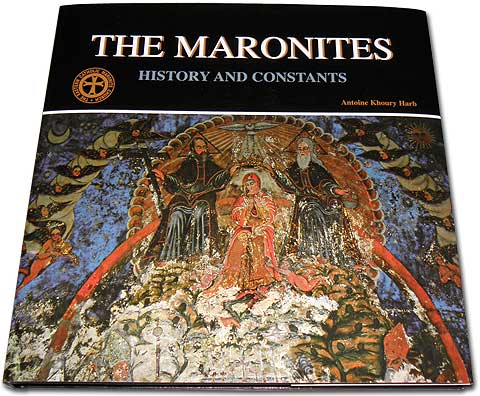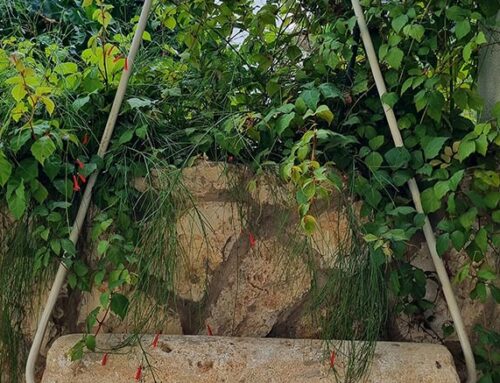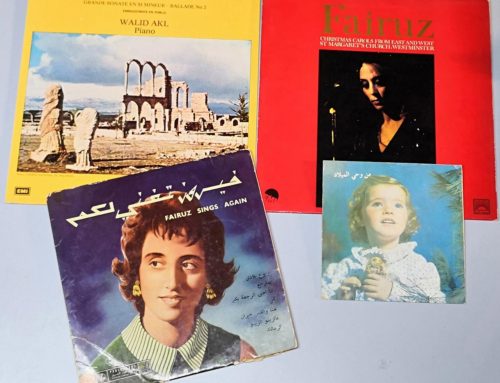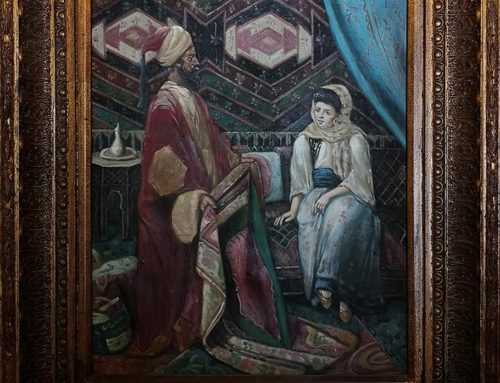Book – The Maronites – History and Constants
Foreword by Rvd. Abbot Paul Naaman
When Dr. Antoine Khoury-Harb, a distinguished graduate of the Holy Spirit University, asked me to introduce his compelling book on the Maronites, he made it clear to me that it was addressed to the Western reader in general, and particularly to those who are of Maronite descent, or to the Maronites who grew up and were reared outside Lebanon. I did my best to put myself in this perspective and tried to figure out the basic features of this tradition that are to be highlighted.
I was quite aware that my perspective should help the reader situate himself in a vis-à-vis with this cultural and religious legacy. We should make sure that this encounter shall help the reader discover this early tradition, reinterpret it, connect it to his actual tradition and to the true concerns of his current world. What I will highlight in this brief introduction are the basic traits of the Maronite tradition and spirituality, which is the best way to make sense of one’s tradition, connect it to reality and build a coherent self-identity. The theological underpinning helps us a great deal solve the riddles raises by the dilemmas of the Local Church (Maronite) and the Universal Church represented by the Church of Rome; those of a monastic community that became a Church; the one of an Eastern tradition and the one of a Western tradition.
The Maronites emerged after the Ecumenical Council of Chalcedon in 451 as a community that wholeheartedly supported the Christology professed by the Council. This dualistic Christology which emphasized Christ’s true divinity and true humanity has profoundly influenced their ministry: a community of confession and martyrdom.
This Christology emphasizes the existential implications of the Incarnation and highlights its humanistic and practical dimensions. It has given shape to a lifestyle and to an ethos which has characterized their society, patterns of behavior, literature, and liturgy. The Incarnated God, according to this theological view, should not be equated with a romantic or a political aspiration, nor identified with an abstract idea or an attribute which qualifies a transcendent Almighty God in total rupture with our human daily concerns. God in Jesus Christ has set a relationship of love and companionship which invites every man to a life of communion since “the full content of divine nature lives in Christ in his humanity, and you have been given full life in union with him” (Colossians, 2-9); Paul considers that “Christ message, in all its richness, must live in [our] hearts” (Colossians 3-16).
The major faultiness which characterizes the contemporary world and the Middle East is not merely reflective of political, social, economic and technological disparities, but they also mirror major differences in philosophical, anthropological and theological worldviews. Therefore, we consider that a true humanism evolves out of a proper theological view of God’s nature and it’s implications for man’s self-understanding. Our theological tradition has constantly stressed that Jesus ministry has revealed man to himself; from now on, the life of Jesus gives our personal and communal life a new meaning. The life of discipleship invites a man to act in a Christ-like way and to rewrite his personal and communal narratives with a different script than the one he has used so far. Jesus the Christ charted in the Beatitudes the path to the Kingdom of God.
If we were to epitomize the basic features of a true Maronite spirituality as suggested by the tradition, I would recapitulate the following aspects:
A- Commitment to man’s ultimate dignity and to a humanistic worldview. This view is shaped by their theological understanding which considers man’s dignity redeemed by the ministry of Jesus Christ and reenacted on a daily basis through the Eucharist and the various ministries of the Church. The Maronite Liturgy puts beautifully this basic truth: “Lord, you have united your divinity to our humanity, and our humanity to your divinity, you have taken what is our’s and given us what is yours…”
B- A spirituality which emphasizes man’s cosmological embeddedness, basic solidarity, and fellowship and treasures civilizational differences, political pluralism and democratic values.
C- Faithfulness to the Gospel reflected in being compassionate, a deep sense of the ministry, the spirit of poverty and a continuous struggle for justice and mercy.
D- A tradition of cultural openness which aims at promoting the dialogue of civilizations, the promotion of intercultural understanding and the management of cultural and religious pluralism along democratic lines. Maronites in their political endeavors have earnestly struggled to foster these ideals in Lebanon as a working model in the Middle East, where multiculturalism, civilizational dialogue, and democratic conflict resolution have hard times.
After having briefly reviewed the outlines of an actualized Maronite spirituality, I wish that this well-written illustrated history should guide your readings, journeys and wanderings through the historical, cultural and religious sites of Lebanon. This work has required extensive research and was matched by a good pedagogical savvy which allows you to travel through millennia. This book is no substitute for research in depth; it is meant to be a clever guide throughout the meanderings of the history of the Maronites and the circuitous paths of their native land, one of their fathers and forefathers.
The Holy Spirit University – Kaslik.9/10/2001

Book the Maronites
Abbot Paul NAAMAN
Preface by H.E. Michel Edde
President of the Maronite Foundation in the World
“A Maronite’s Knowledge of his personal identity, the legacy of his ancestors, his historical roots and his genuine heritage all constitute the most effective and powerful incentive to restore faith in his right and create in him the feeling of loyalty and the sense of responsibility and duty towards his homeland and his community.”
In the introduction to the text 18 entitled “The Maronite Church and Culture”, part of the File III of the Maronite Patriarchal Synod, we read the following,
“It has become prevalent today that the cultural dimension of human life is an essential element in the development of human societies and in their interaction.
The human person cannot elevate to the humane level except through Culture… Heritage represents the cultural product of a people which has accumulated over the years within a constant geographical setting. It consists of material, intellectual and spiritual achievements, the essence of which encompasses all the features of a given people… As such, heritage becomes the cultural identity of civilization communities, since it defines them with their traits and characteristics. Heritage is also the memory of peoples because it testifies, with its numerous landmark achievements, to their historical depth throughout its different stages. It guarantees the survival of a community since it embodies its unity throughout history, its deep rootedness in its milieu and its awareness of its individuality.”
However, the identity of a heritage cannot be transformed from a static to a dynamic one except through knowledge. Knowledge is an intellectual enlightenment that posits a question to the self and seeks the answer from the other; this opens the road to free dialogue, to favorable reception and good understanding. In this context, and as a contribution to introduce the Maronites and their deep-rooted heritage in the soil of Lebanon, Dr. Antoine Khoury Harb wrote this book.
One of the most distinguishing characteristics of this historical research done by the author is his style in presenting the major facts; it is simple, scientific, and documented. Through his style, Harb spares the reader the endurance of listening to a lecture and going through the technicalities of research; instead, Harb takes his readers on an intellectual expedition through which the lecture does not lose its pensive depth nor does the study lose its sobriety and objectivity.
The expedition was undertaken by Harb in time reaped facts, and discovered alongside the scope of the Christian presence in general, the Maronite in particular, throughout the different historical eras most of which have been landmarks of light and radiance.
That expedition included the roots of Christianity In Lebanon, its various sites in the different regions – the Beqaa valley, the coastal regions, the mountains – making a stopover with St. Maroun and his missionary role that aimed at promoting the creed and the faith, a faith that strongly and courageously co-existed with powerful empires most important among which were the Roman Empire, the Byzantine Empire, the Persian Empire, the Arabs, the Mamlukes and the Ottoman Empire. Harb moves on to tackle the issue of the Marada both in their confrontation state and their peaceful one, alongside the consecutive events in Lebanon and without losing sight of the Maronite role during the times of conquests, during the Emirate period and during the Moutasarifiyat; all evidence of the continual historical Maronite presence in this geographical location – Lebanon.
A Maronite’s knowledge of his personal identity, the legacy of his ancestors, his historical roots and his genuine heritage all constitute the most effective and powerful incentive to restore faith in his right and create in the feeling of loyalty and the sense of responsibility and duty towards his homeland and his community.
Harb’s book will undoubtedly contribute to the consolidation of the Maronite sense of belongingness, and the attachment to the Lebanese identity among the Maronites in the world by raising their awareness of their heritage and their Lebanese and Maronite deep-rootedness. Due to the importance of this book, the “Maronite Foundation in the World”, established by Maronite Patriarchate, and which His Beatitude Cardinal Mar Nasrallah Boutros Sfeir has honored me by appointing me President of its Board of Trustees, has supported the publishing of a special English edition of this book which has already been published in Arabic and will be published in other languages in the world where Maronite communities are present.
This book, authored by Dr. Antoine Khoury Harb, is a serious contribution to our collective memory not only of the past but for the future as well. It is certainly a national contribution that prompts us to find out how to love Lebanon.
Michel Edde – Beirut, June 7, 2009






